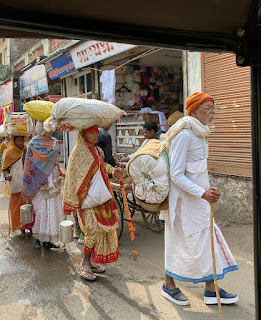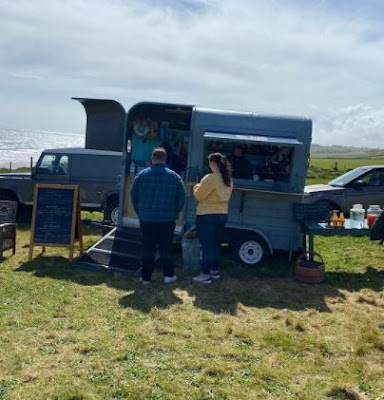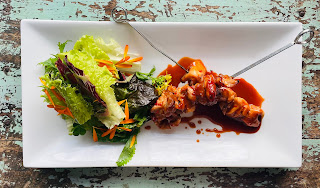Last year our Indian holiday had to be cancelled for all the reasons we are now familiar with, so rather than ask for a refund, we deferred our booking for 12 months so we had something really to look forward to throughout the ups and downs of the last year.
In November 2021, India reopened for travel and one could get a month-long visa so rather than hop from one place to another, we decided to go directly to Ahilya Fort, an enchanting heritage property perched high above the sacred Narmada River in Maheshwar where there’s always a gentle breeze.
It’s quite a mission to get there, Cork to Amsterdam and onto Delhi and then a domestic flight to Indore. A driver from the hotel welcomes you at the airport with a picnic to sustain you for the almost two-hour journey to the exquisitely restored fort, originally the home of Ahilya Bai, the warrior Queen who ruled Indore from 1765 – 1796.
The driving force behind the restoration project was Prince Richard Holkar, descendant of Queen Ahilya Bai. He and his original wife Sally Holkar also re-established the almost extinct hand weaving industry for which Maheshwar was justly famous and is now once again thriving. Women now come from all over India to choose a much-coveted Maheshwar silk sari.
The balcony of our bedroom overlooked the ghats (steps), temples and chattris on the riverbank where there is endless activity from sunrise to sunset. It’s a riot of colour. Before dawn, local women come to wash their clothes in the river. Hundreds of pilgrims, some of whom have walked for over 150kms with their little bundle of possessions, pour onto the ghats to perform their pujas and bathe in the sacred river to wash away their sins.
Others chant, sing, pray… Children fly homemade kites, feed the sacred river fish and sell brightly coloured baubles to Indian tourists on day trips…There’s street food galore, poha, pingers, poppodums, sugar cane juice, guavas…The women bathe in their beautiful saris and then spread them out on the ghats to dry...
Little boats, all gaily painted, ferry devotees backwards and forwards across the km wide river to the myriad of temples on both riverbanks…From the poorest to the most affluent…everyone is so devout…it's incredibly moving.
The little town is bustling with activity too, lots of tiny shops, selling everything from garlands of marigolds and roses to embellish the Gods or welcome visitors. Intriguing hardware shops, tailors busy on their Singer sewing machines, jewellers hand beating silver, stalls piled high with spanking fresh vegetables and fruit, bananas, carrots, water chestnuts, papayas, watermelons, pomegranates…
A host of Indian sweets and namkeen shops. Halfway downtown, close to the ATM machine, there’s a barber with an open-air shop front trimming hair, beards and soaping up chins ready for shaving. Around the corner, a man meticulously irons piles of clothes with a big heavy iron like one might find in an antique shop.
Others sell colourful pictures of the Indian Gods, incense and much sought-after Shiva lingam from the river, and other essentials for puja’s (special prayers) – so beautiful and intriguing, it’s like walking through a Bollywood movie…
From early morning to late at night, the air is fragrant with the smell of food from the numerous street stalls, katchori, pakoras, bright orange jalebi, poha, robori and a wonderful fluffy saffron milk bubbling in a large kari (iron wok).
By now you can tell that I love India. Everyday there’s another adventure, somewhere new to explore.
I had several wonderful cooking classes in Indian homes, usually from grandmothers who still do everything from scratch and cook over an open fire with wood and dried cow dung patties. The latter may sound very strange to us but in fact, it’s very common in rural India.
Food cooked over dried dung fires tastes delicious. They don’t smell at all, it’s a brilliant way of recycling and Guess What…you can buy Indian cow patties (gotha) via Amazon! They are also used in some religious ceremonies.
How about the food at Ahilya Fort?
All meals are included in the room rate plus afternoon tea and non-alcoholic cocktails from 7-8pm. Much of the produce is home-grown in the organic gardens, on the farm or comes beautifully fresh from local markets.
Memorable, long lazy breakfasts with deliciously ripe fresh fruit and juices, homemade yoghurt (curd), jams made by Prince Richard Holkar himself, freshly baked breads…I made kumquat marmalade from the fruit in the garden and picked the lemons from the lemon tree to make a zesty lemon curd. There’s an Indian speciality every day, dosa with sambal, idli, uppam, masala omelette or Maheshwari scrambled eggs…
Lunch is mostly western vegetarian food but for dinner a different Thali every night, with 6 or 7 little bowls of delicious Indian food and fresh crunchy vegetables with a segment of lime and salt.
Some of the recipes come from Prince Richard Holkar’s book, the Food of the Maharajas, others have been brought to Ahilya Fort by the cooks from their family homes.






















